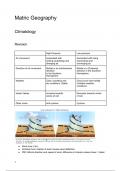Resume
Summary Chapter 4 Marketing Communications
- Établissement
- Universiteit Gent (UGent)
Summary study book Marketing Communications of Prof Patrick de Pelsmacker, Prof Maggie Geuens (H4) - ISBN: 9781292135809, Edition: 6, Year of publication: - (chapter 4)
[Montrer plus]













